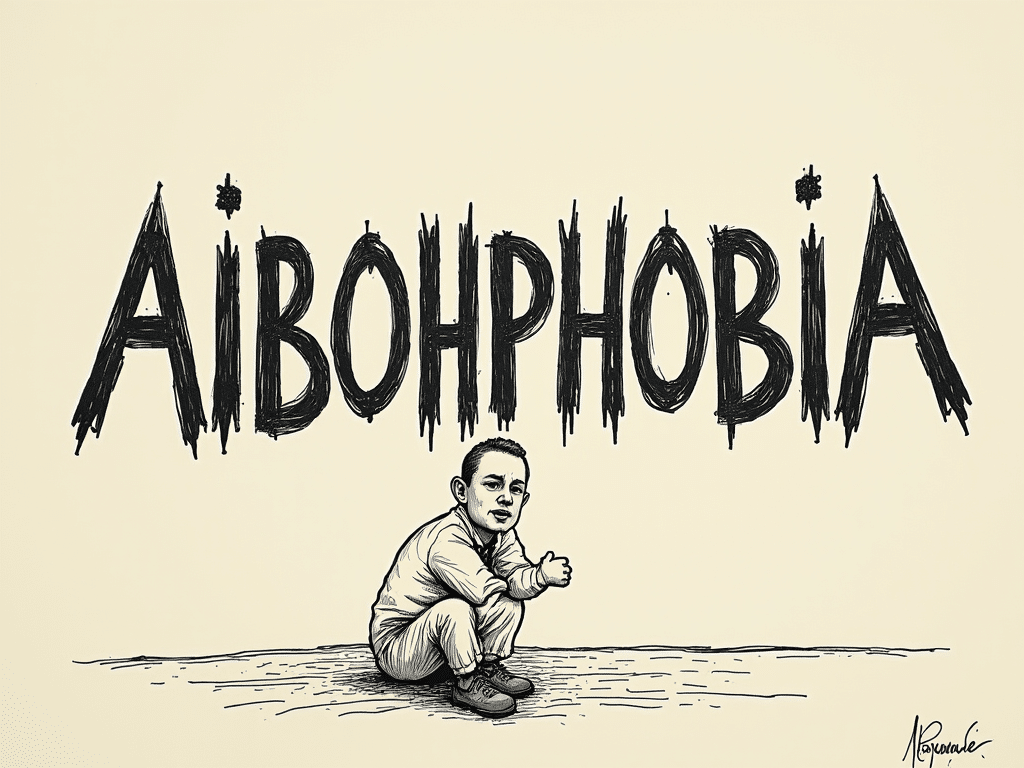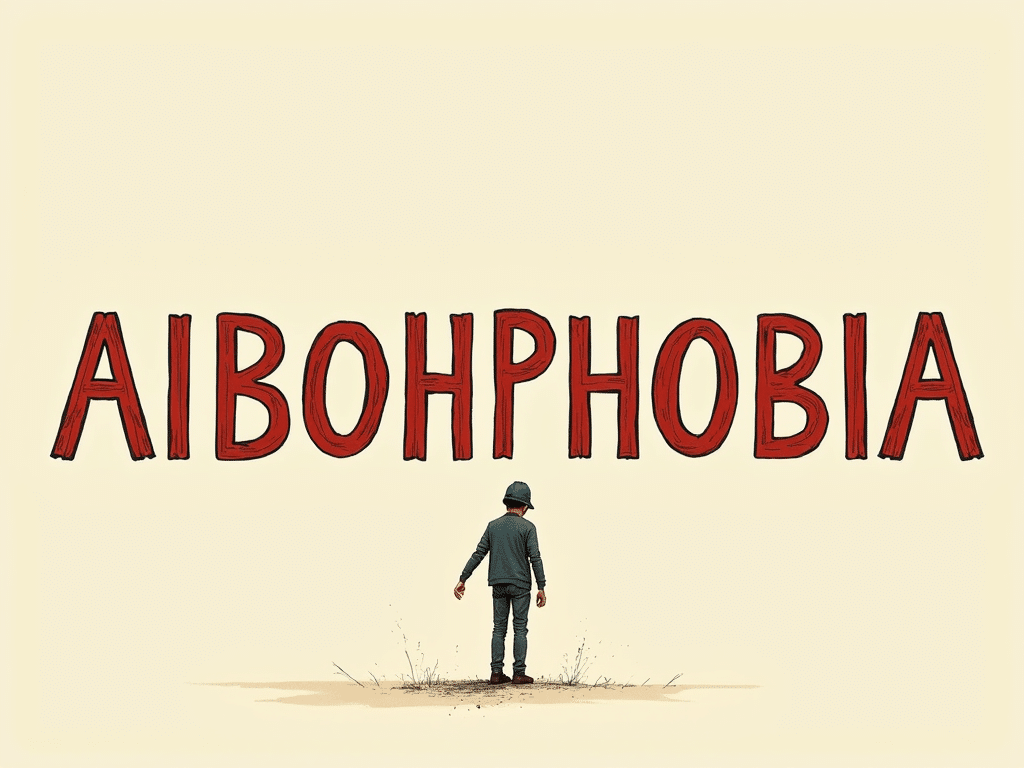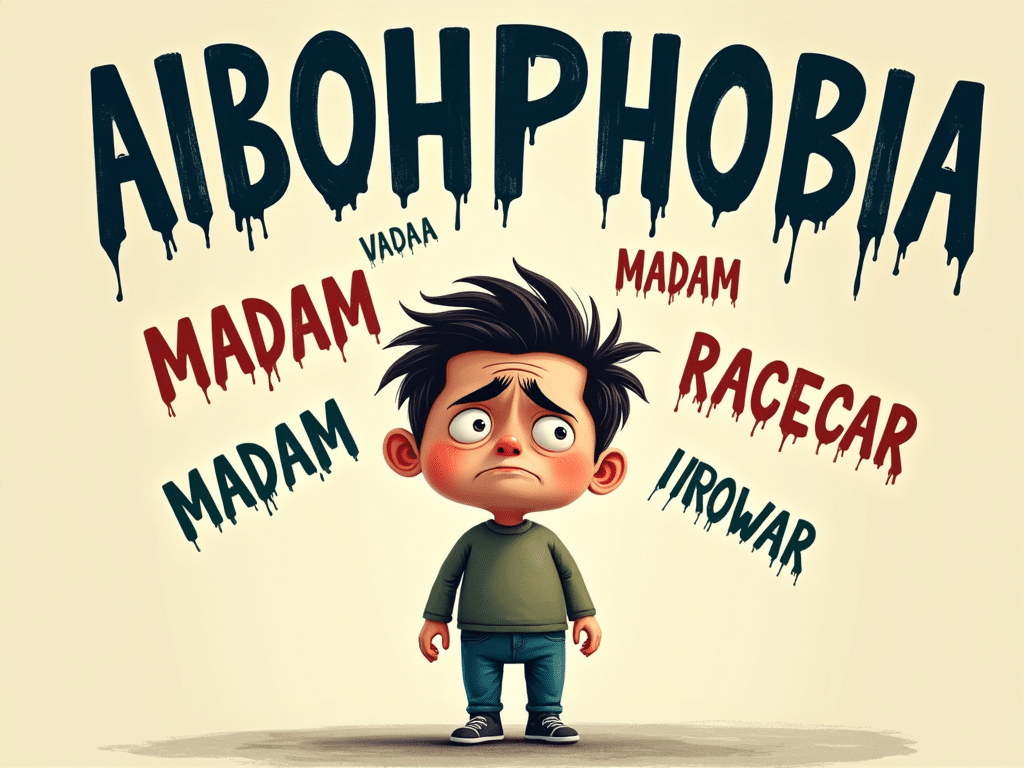Ready for a mind-bender? Let’s talk about aibohphobia – the fear of palindromes. And here’s the kicker: the word “aibohphobia” itself is a palindrome! That’s right, it reads the same backward and forward. If that’s not the most “bruh” moment in linguistic history, I don’t know what is! 📚
| Key Takeaways | Description |
|---|---|
| Definition | Fear of palindromes (words that read the same forward and backward) |
| Irony Level | Maximum – the word itself is a palindrome |
| Creation | Deliberately crafted as a humorous term |
| Purpose | Educational and entertainment value |
| Cultural Impact | Used in wordplay and language education |
Aibohphobia: The Most Ironic Fear You’ll Ever Meet 🤔

Etymology and Origins ✨
Let’s break down this wonderfully weird word:
- “Aiboh” = Reverse of “phobia”
- “Phobia” = Fear of something
- Put them together = A palindromic word meaning fear of palindromes
It’s like whoever created this word was sitting there thinking, “How can I make this as ironic as possible?” And “periodt”, they nailed it!
Understanding Palindromes
Before we dive deeper, let’s get clear on what palindromes actually are. They’re words, phrases, or sequences that read the same forward and backward. Here are some classic examples:
- Simple Words:
- Noon
- Radar
- Level
- Madam
- Phrases:
- “Never odd or even”
- “Do geese see God?”
- “A man, a plan, a canal: Panama”
Think of palindromes like the “giga chad” of words – they work both ways and look good doing it!
The Irony Factor
Now, let’s talk about why aibohphobia is considered the ultimate linguistic joke. Imagine being afraid of palindromes and then finding out the name of your fear IS a palindrome! That’s like being afraid of heights and living on top of Mount Everest.
Here’s what makes it extra special:
- Deliberate Design:
- Created specifically to be ironic
- Perfect example of linguistic humor
- Self-referential nature
- Educational tool
- Similar Humorous Phobias:
- Hippopotomonstrosesquippedaliophobia (fear of long words)
- Sesquipedalophobia (another fear of long words)
- Both are intentionally long words!
Related Phobias

While aibohphobia might be a playful creation, there are real language-related fears out there:
Legitimate Language Fears:
- Logophobia (fear of words)
- Glossophobia (fear of speaking)
- Xenoglossophobia (fear of foreign languages)
These are like the serious cousins of our funny friend aibohphobia. They’re not playing around – these are real concerns that people deal with daily.
Cultural Impact 🎯
Aibohphobia has made quite a splash in word-nerd circles. It’s like the “YOLO” of linguistic jokes – everyone gets it, and it never gets old. Here’s where you might encounter it:
Popular Usage:
- Word puzzle books
- Language learning apps
- Educational games
- Social media word challenges
Think of it as the ultimate conversation starter for language lovers. It’s like saying “spill the tea” but for grammar enthusiasts!
Fun Facts and Examples

Let’s dive into some mind-bending palindrome facts that’ll make you go “IKYFL”:
- Longest Known Palindromes:
- Some are over 1,000 characters long
- Often computer-generated
- Can form complete stories
- Make perfect sense both ways
- Languages with Most Palindromes:
- Finnish
- Arabic
- Hebrew
- Latin
- Famous Palindrome Moments:
- Used in ancient magical texts
- Featured in modern literature
- Popular in computer programming
- Found in mathematical sequences
Educational Applications
Teachers love using aibohphobia and palindromes to teach:
Learning Benefits:
- Pattern recognition
- Spelling improvement
- Language appreciation
- Critical thinking
It’s like a brain workout that’s actually fun!
Creating Your Own Palindromes
Want to try making palindromes? Here’s a quick guide:
- Start Simple:
- Begin with short words
- Use common letters
- Think symmetrically
- Build gradually
- Advanced Techniques:
- Add punctuation
- Include spaces
- Create sentences
- Play with meaning
The Future of Word Play
As language evolves (just look at how “Gen Z slang” keeps changing), palindromes and word play continue to fascinate us. They’re showing up in:
- Digital art
- Computer coding
- Social media trends
- Educational technology
Practical Applications
Believe it or not, palindromes have real-world uses:
- Memory Enhancement:
- Pattern recognition
- Mental exercise
- Language skills
- Brain training
- Creative Writing:
- Unique perspectives
- Writing challenges
- Artistic expression
- Literary devices
Conclusion
Aibohphobia might be a made-up word, but it teaches us something important about language: it can be both educational and entertaining. Whether you’re:
- A word enthusiast
- A casual learner
- A puzzle solver
- Just curious
…understanding palindromes and their quirky “fear” helps us appreciate the playful side of language.
Remember:
- Words can be fun
- Language is alive
- Creativity matters
- Even fears can be funny
P.S. Want to explore more fascinating language phenomena? Check out our articles on word origins and modern expressions. Because language is like a playground – there’s always something new to discover! ✨
And hey, if you ever meet someone with aibohphobia, maybe don’t tell them what their fear is called. That would be like playing yourself at your own game! 😉







